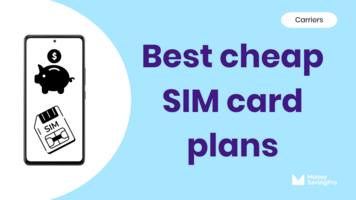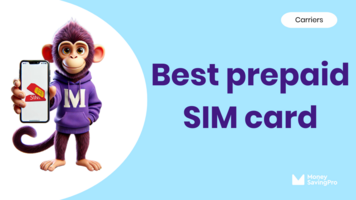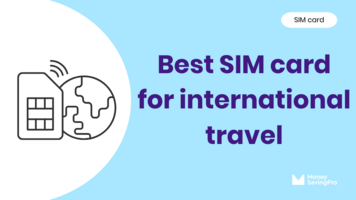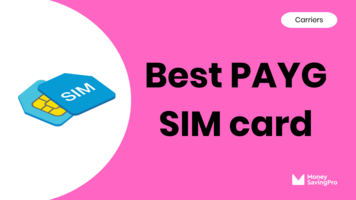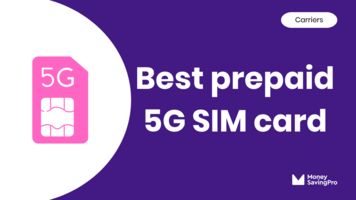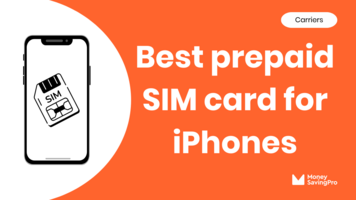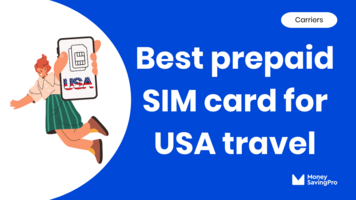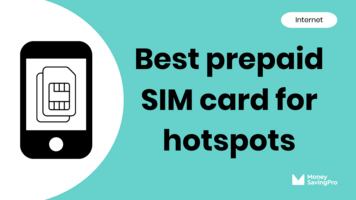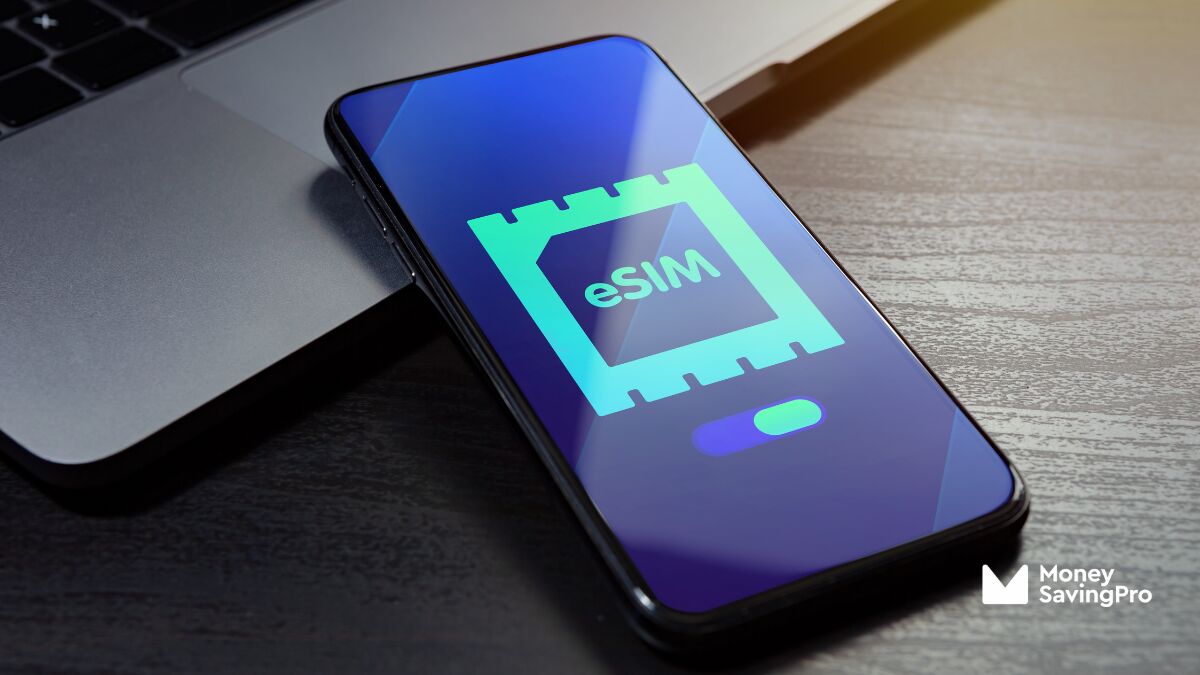
Are you thinking about getting your hands on the iPhone 14 but want to know how many eSIMs it has? As you may be aware, the iPhone 14 has no physical SIM card trays, but it has two eSIMs.
After upgrading to the iPhone 14 myself, I'll help you explore everything you need to know about iPhone 14 eSIMs. And my top recommendations for making this a more affordable phone service.
How does dual eSIM work?
With the iPhone 14, Apple has introduced smartphone users to an eSIM-only format. It has two eSIMs and no physical SIM tray.
So, if your existing iPhone uses a physical SIM, you'll need to switch from a SIM card to an eSIM plan, even if you want to keep the same carrier.
A dual eSIM means your iPhone can support two eSIMs simultaneously, making it easier than ever to manage multiple phone numbers or switch between carriers seamlessly. Depending on your needs, you can assign one eSIM to your primary carrier and another to a secondary line carrier or data plan.
This is perfect for those who want to take advantage of the best deals and offers from different carriers or even have a separate business line on the same device.
Benefits of dual eSIM
- Cost savings: Since you can easily change carriers or plans, you can jump on limited-time promotions and discounts, ensuring you get the best deal available at any given time.
- Convenience: No more hunting for paper clips to eject your SIM card tray. And no more visiting a carrier store or waiting by the mailbox for a physical SIM to arrive. You can do it all from the comfort of your own home.
- International travel: Traveling abroad? eSIMs make it simple for international travelers to add a local data plan while keeping their home number active. This can help you avoid expensive roaming fees.
Disadvantages of dual eSIM
While eSIMs have plenty of benefits, it's important to consider the drawbacks:
- Limited carrier support: Not all carriers support eSIMs, so you may be limited in your choices when looking to switch plans.
- Device compatibility: Your phone must not have a carrier lock and must support eSIMs, which not all older phones do.
- Initial setup: Setting up eSIMs can be slightly more complex than inserting a prepaid SIM card, especially if you're not tech-savvy.
How to install an eSIM on iPhone 14
Setting up an eSIM on your iPhone 14 is a fairly straightforward process. Here's a brief guide to help you get started:
- Choose your carrier: First, ensure your carrier supports eSIMs. Once you've chosen your eSIM plan, you'll get a QR code or eSIM activation code.
- Access eSIM settings: On your iPhone 14, go to "Settings," then scroll down and select "Cellular" or "Mobile Data." Look for "Add Cellular Plan" or "Add Data Plan."
- Scan the QR code: Use your iPhone's camera to scan the QR code. This will automatically begin the activation process. Enter the verification code and follow the onscreen instructions.
- Assign labels: After activation, you can label your eSIMs for easy identification, such as "Work" or "Travel."
- Switching between eSIMs: Once your eSIMs are activated, you can easily switch between them. Just go to "Settings" > "Cellular" or "Mobile Data" and select the active line you want to use.
It's also easy to delete eSIMs if you decide to change carriers. Check here to see how to delete eSIM data.
MVNOs that support eSIM
After over ten years of experience in the industry, I've made it my goal to bring MVNOs to the attention of US consumers and call into question the prices and lack of transparency from the big three networks.
So, if you're considering switching to a more budget-friendly cell phone plan but still want to take advantage of eSIMs, you're in luck.
Many MVNOs offer eSIM plans, providing you with the flexibility and savings of eSIMs while enjoying the competitive pricing that low-cost carrier plans are known for.
Some popular MVNOs that support eSIM include:
- Mint Mobile
- US Mobile
- Tello
- Boost Mobile
Before switching carriers, check with your chosen MVNO to confirm their eSIM compatibility and any specific requirements for eSIM carrier activation. With eSIM-enabled MVNOs, you can harness the full power of dual active eSIMs to customize your phone plan and save money while enjoying the same excellent network coverage you're used to on major networks.
The future of SIM cards
eSIM-only technology is undoubtedly the future of SIM cards.
As more manufacturers adopt these multiple eSIM features and eliminate physical SIMs, it's likely to become the standard in the coming years.
Apple has also set a precedent since the iPhone 14 release, which eventually means more carrier options, more flexible plans, and even more money-saving opportunities.
iPhone 14 eSIM FAQs
It depends on your cell phone carrier. Not all carriers support eSIM, so you'll need to check with them to see if it's an option.
Yes, you can change carriers as often as you like with eSIM, as long as the carrier supports eSIM technology and there's no carrier lock or contract with your previous carrier.
No, eSIMs do not require a physical SIM card slot, even though many previous iPhones have them. eSIMs are entirely digital. The iPhone 14 and iPhone 15 only have eSIM- compatibility.
Recap
The iPhone 14 comes with dual eSIM support, which can be a valuable money-saving tool if you're looking to save money.
With eSIMs, activating a new plan or switching carriers is as easy as a few taps on your screen. So whether you're traveling abroad or need a separate work number, eSIMs can help you stay connected without the same physical SIM restrictions.
eSIMs offer convenience, cost savings, and flexibility in managing your cell phone plans.
iPhone eSIM FAQs
- What is an iPhone eSIM? How does it work?
- How to Get a Free iPhone eSIM Trial
- How to setup an eSIM on an iPhone
- How to Switch eSIM Carriers on iPhone
- How to Transfer eSIM to a New iPhone
- How to Buy eSIM on iPhone
- Which iPad Models are eSIM compatible?
- Which iPhones Support Dual SIM?
- How Many eSIMs does an iPhone 14 have?
